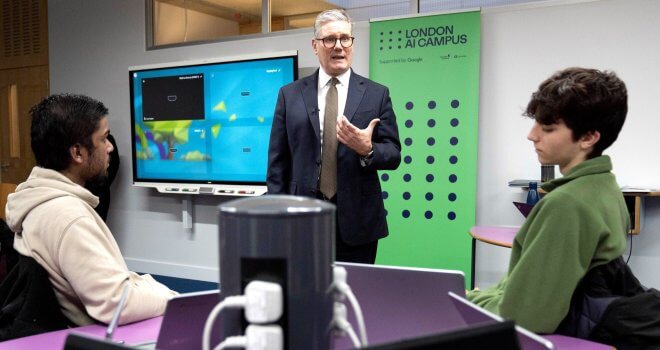Seven Tips To Consider When Successfully Reintegrating Furloughed Employees

Whilst organisations have taken proactive steps to communicate with all employees, for some being Furloughed can seem like you’re forgotten. Being Furloughed isn’t a paid holiday.
These are employees who, through no choice of their own have been asked to stay at home; to play their role in safeguarding an organisations future and to take a reduction in their wages and sit tight and wait for more information to follow.
Being removed from any situation can feel isolating, particularly when you’re desperate to get going again, to make a difference and to reconnect with colleagues. It can also result in furloughed employees feeling frustrated and even guilty that they’re not doing enough. These heightened emotions can increase levels of anxiety particularly as the future is so unknown.
Equally, the disproportionate balance of work that has been thrust upon those employees who were identified as key workers, and who have kept the nation moving over the past few months, has been immense.
They are likely to feel exhausted. There may even be an element of resentment starting to creep in as they look across the growing divide between these employee groups.
As the Covid19 lockdown restrictions imposed by the UK Government are eased, organisations are turning their attention towards business recovery. Leaders and HR practitioners are entering unchartered territory as they look to make plans for organisational redesign including the reintegration of people.
Some jobs may unfortunately no longer be necessary or possible and where roles are required, they will look and feel very different as we all move into a post-Covid19 world. Whatever the landscape within your organisation reintegration will be no easy feat.
So, here are seven tips to consider when successfully reintegrating furloughed employees
Communication
Not only do all employees need to understand and know what’s happening with the changes that are being made within the workplace to make them Covid19 safe, but they also need to have the opportunity to be listened to heard and understood.
Organisations should look to put in place mechanisms so that all employees are given an opportunity to ask questions or raise concerns.
Reconciliation
It’s also important to take a ‘temperature check’ with all employees. In some instances, a divide may have been created inadvertently between the workforce.
Those who have continued to work may be feeling exhausted and aggrieved by polarity perceptions – continuing to work and shouldering the workload responsibilities versus colleagues who are being paid to stay at home.
As organisations look to reintegrate their workforce, it’s really important that they take the time to consider the reconciliation that will be required between the two groups.
Epiphany moments
Many employees (Furloughed or otherwise) will, over the past several months, had epiphany moments. They may have questioned the level of satisfaction in their life and in their job. They may have reflected upon how they were previously spending their time and whether they had been able to achieve a positive work life balance.
As organisations move to reintegrate their workforce, I’d recommend that you consider asking both employee groups:
- ‘What one thing has the current situation enabled you to do that they haven’t been able to do before?’
- Name one thing that we should continue to do to help you to cope with the demands of the current situation.
- What one thing will be important to them in the way that they work as they reintegrate with each other
Whilst the cases of COVID-19 are reducing, the level of changes in terms of new working practices is likely to change and evolve regularly.
It’s important that you take the time to learn rather than assume; the insights gained from these questions will help you to understand the needs of your people and to reshape your organisation structure going forward.
Authentic leadership
This is now the time for authentic leadership. For organisations to be clear and bold about their organisational culture going forward and to clearly state what they stand for.
Empathy
As a result of new ways of working management styles will require an overhaul. Empathy is going to be a vital component of the leadership and managerial toolkit.
Many employees will have suffered loss and grief during this period of time. Some will have experienced bereavement for loved ones and colleagues affected by Coronavirus. Some will experience grief as the lockdown restrictions change and some will be overwhelmed by the sheer uncertainty of what the future holds.
Being an authentic leader doesn’t require you to have the answers to everything but showing empathy, humility and even a level of vulnerability during this period of time is likely to move you closer towards authentic leadership.
Skills transfer
The sheer level of new skills that organisations and their people have adopted over the past few months has been vast and should not go unrecognised.
Often during organisational change companies talk about ‘a reluctance to change’, that ‘people are unwilling to learn new skills’. Well over the past few months, whilst change may have been thrust upon us all, the amount of new skills that have been learnt by everyone is huge.
Take the time to ask your people what new skills they have gained over recent weeks. Technology would be an instant one that springs to mind as many have endured steep learning curves as they’ve grappled with and become accustomed to using platforms such as Zoom or MS Teams.
But other employees may also have proactively taken the time to learn other skills or have been coaching or mentoring. They may have rediscovered their creative side.
Consider how all of these newly developed and rediscovered skills can be transferred back into your organisation.
In addition, people who have continued to work will have found new and enhanced ways to collaborate, or may have removed barriers to become more agile. Capture the positive learnings from COVID19 and weave these into your future.
Inclusive Redesign
Sadly, not all organisations will look and feel the same as we look to the future. Some will need to be smaller or offer different services. For those organisations they will need to embark upon employee reductions.
It is however important for organisations to take the opportunity to also consider the required job architecture within their organisation. Can roles now be performed on a flexible and job share basis? Do they have to be performed in the same way?
This is now an opportunity for organisations to be innovative and to integrate Diversity and Inclusion initiatives into all people practices as they look to reshape their workforce going forward.
Organisations and their leaders who take the time needed to master this new norm will be poised for success. This is a golden opportunity for organisations to set out plans that will define their future success. They have a choice to make – reinstate antiquated people practices or create a new reality where everyone can thrive.
Teresa Boughey MA FCIPD is CEO of award-winning Jungle HR and founder of Inclusion 247. She is a TEDx speaker, a Non-Executive Director and author of Amazon bestseller Closing the Gap, designed to support business professionals at every stage of their inclusivity journey that was highly commended at the Business Book Awards 2020.
Teresa is a UK Female Entrepreneur Ambassador, member of the Women and Enterprise and the Women and Work APPGs and a regular contributor to the media and public policy. Learn more at https://www.inclusion247.com/




